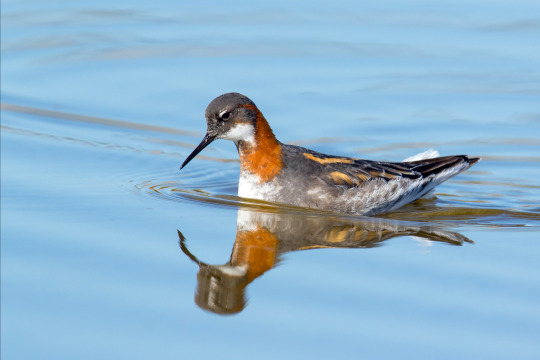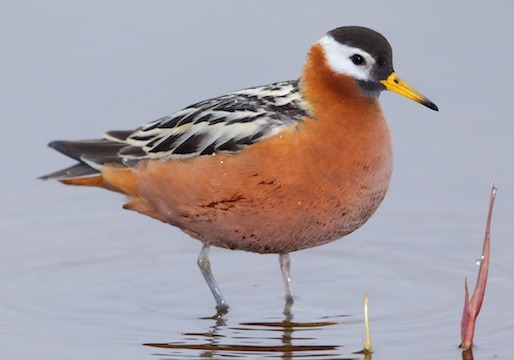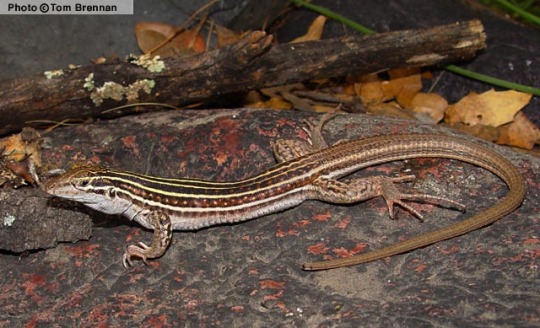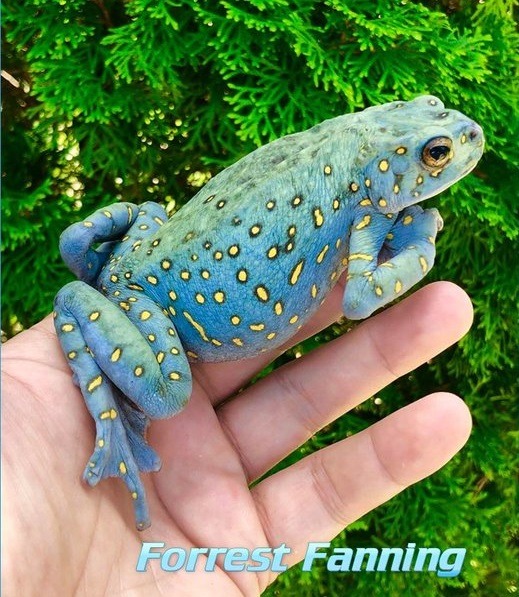#phalaropus
Text

Wilson's Phalarope (Phalaropus tricolor), female, family Scolopacidae, order Charadriiformes, Chicago, IL, USA
Female phalaropes are more colorful than males, and the females court the males. The drably colored males tend the eggs and nest, after the female lays them.
photograph by Tony Dvorak
Cornell Lab of Ornithology
#phalarope#shorebird#phalaropus#scolopacidae#chardriiformes#bird#ornithology#north america#animals#nature
270 notes
·
View notes
Text

Migratory May Day 19: Red-Necked Phalarope
Reference photo by Dorian Anderson
#migratory may#red-necked phalarope#phalarope#phalaropus lobatus#phalaropus#scolopacidae#charadriiformes#bird#birb#birds#birbs#bird art#art#digital art#artists on tumblr#tw eyestrain#cw eyestrain#wauk wauk
29 notes
·
View notes
Photo

Wilson’s Phalarope
42 notes
·
View notes
Text
BOTD: Red-necked Phalarope

Photo: Mick Thompson
"Phalaropes reverse the usual sex roles in birds: Females are larger and more colorful than males; females take the lead in courtship, and males are left to incubate the eggs and care for the young. Red-necked Phalaropes nest around arctic tundra pools and winter at sea. During migration they pause on shallow ponds in the west, where they spin in circles, picking at the water's surface. However, most apparently migrate offshore, especially in the east. Despite their small size and delicate shape, they seem perfectly at home on the open ocean."
- Audubon Field Guide
#birds#red necked phalarope#birds of north america#north american birds#phalaropes#sandpipers#shorebirds#waders#wading birds#birds of the us#birds of canada#birds of mexico#birds of central america#birds of the caribbean#birding#birdblr#birblr#bird of the day#Phalaropus lobatus
54 notes
·
View notes
Text

Wassertreter, Phalaropus lobatus | Die Vögel (1913) | Alfred Edmund Brehm (1829-1884) | Biodiversity Heritage Library
8 notes
·
View notes
Photo

Phalaropus lobatus [アカエリヒレアシシギ,Red-necked phalarope]
人を恐れてないようで、かなり近くまで来てくれました。
凛々しい😊
在庫から。
61 notes
·
View notes
Text



A pair of beautiful and distinctive Wilson's Phalarope (she's more beautiful than he, if you ask me—he looks not too dissimilar to other sandpipers) wading along the shore of a pond.
photos by me. 2023-05-13 Outside of Vulcan, AB. cross-posted to the Cornell Lab of Ornithology's Macaulay Library.
Phalaropus tricolor
#mine#Phalaropus tricolor#bird#birds#wilson's phalarope#birding#birdwatching#birb#birdblr#birblr#shore birds#nature photography#ornithology
3 notes
·
View notes
Text
FALAROPO PICOGRUESO
PHALAROPUS FULICARIUS
NOMBRE CIENTÍFICO: PHALAROPUS FULICARIUS.
LONGITUD: 20 A 22 CM.
PESO: 40 A 80 GRAMOS.
MIGRACIÓN: MIGRATORIO.
ESTADO: COMÚN.
UBICACIÓN: CIRCUMPOLAR ALREDEDOR DEL ÁRTICO, OESTE Y SUR DE AMÉRICA, OESTE DE ÁFRICA.
A DIFERENCIA DE LAS MAYORÍAS DE LAS AVES ZANCUDAS QUE VIVEN EN LAS RIBERAS O SUS ALREDEDORES, FALAROPO PICOGRUESO ES UN NADADOR EXCELENTE Y PASA GRAN PARTE DEL TIEMPO…

View On WordPress
0 notes
Text

wilson's phalarope (Phalaropus tricolor) by Raphael Kurz
1 note
·
View note
Text





so i may have thought abt this a bit :p. something something i am cringe but i am free something something
mostly a Fey (Maya) spread but i got SO EXCITED when i discovered the takahē, so have bonus phoenix
for the feys: honorable mention to eclectus parrots, the belted kingfisher, and the genus phalaropus for being species with brighter females,, and especially to the cardinal for symbolizing a loved one’s spirit being close by in a lot of cultures.,, for now though, i just stuck with crows (and cuz the mia a drew a couple weeks ago could accidentally work as crow wings)
#im living my best life#ace attorney#fanart#phoenix wright#maya fey#mia fey#pearl fey#aa#wings#okart#ace avian
555 notes
·
View notes
Video
Beautiful Sunny Morning Swim - Wilson's Phalarope by Georgie Alexon
Via Flickr:
This Wilson's Phalarope photograph was taken in Alberta, Canada on a sunny spring day. He was out swimming in circles on a lake looking for his next meal. These birds forage for food in a unique way. This species swims around in circles creating a whirlpool. This agitates any small aquatic invertebrate and algae from the substrate of a pond or lake and brings it to the surface. This species of bird also forages in the mud surrounding the pond or lake for prey. Wilson's phalaropes will probe their bill into the mud or stand still and snatch flying insects out of the air. Wilson's phalaropes rarely pursue prey while in flight. -Phalaropus tricolor
#bird#oiseaux#wilsons#phalarope#alberta#canada#canon#eos#day#photo#photography#calm#outside#countryside#white#red#orange#water#blue#lake#wildlife#animal#nature#colors#Phalaropus tricolor#Scolopacidae#morning#flickr
2 notes
·
View notes
Note
Hello! Since March 8th is International Women’s Day, I was wondering if you might share with us some females from various species? (Since the more vibrant males tend to get the spotlight lol)
International Women’s Day!!!
Yes yes yes! With many animals, the females are more impressively large or more colorful than the males. Let's have a look at some impressive and amazing females...

(Southern) Green Anaconda (Eunectes murinus), female, family Boidae, Ecuador
With many snakes, the females get to be much larger than the males. Female Anacondas grow to be the heaviest snakes in the world, as up to 97.5 kg (214 lb 15 oz).
Though reports have claimed that Green Anacondas can grow up to over 30 ft long, the longest ever ACTUALLY measured was about 19 ft. long.
photograph by Alejandro Arteaga
Advance Wildlife Education

Brahminy Blindsnake aka Flowerpot Snake (Indotyphlops braminus), family Typhlopidae, found in tropical and subtropical areas around the world
This snake is native to somewhere along the Indian Ocean, possibly somewhere in SE Asia or coastal Africa.
The fossorial (burrowing) snake feeds mainly on the larvae, pupae, and eggs of ants and termites.
All known specimens of this snake have been female. They reproduce through parthenogenesis (asexually).
photograph via: UGA Coastal Ecology Lab

Red Phalarope (Phalaropus fulicarius), female, family Scolopacidae, order Charadriiformes, near Barrow, Alaska, USA
Female Phalaropes are larger and more colorful than the males. They court the males and defend the nest site. The males incubate the eggs, and raise the chicks.
photograph by Mark A. Chappell

Sonoran Spotted Whiptail (Aspidoscelis sonorae), females, family Teiidae, Arizona
This is another all female parthenogentic species.
There are other closely relates species, other whiptails and racerunners, that are also all female populations. Some of them are completely parthenogenic, and some combine parthenogenesis with sexual input from closely related species or populations nearby.
photograph by Tom Brennan

photograph by Forrest Fanning

photograph by Giuseppe Mazza
Asian Yellow-spotted Climbing Toad (Rentapia hosii), females, family Bufonidae, found in SE Asia
The females of this species are large, gorgeous, ornate frogs, while the males are much smaller and much less colorful.
#frog#toad#amphibian#snake#anaconda#reptile#phalarope#bird#animals#nature#whiptail#lizard#blind snake#international women's day
507 notes
·
View notes
Text

Birdtober 2022
Day 11: Ocean
Species: Red Phalarope (Phalaropus fulicarius)
Unlike most shorebirds, this species migrates through and spends most of its nonbreeding season on the open ocean.
5 notes
·
View notes
Photo

Wilson's phalarope at Seedskadee National Wildlife Refuge (via USFWS Mountain-Prairie)
Photo: Tom Koerner/USFWS
#Wilson's Phalarope#Phalaropus tricolor#Phalaropus#Scolopacidae#Scolopaci#Charadriiformes#Aves#birds#shorebird#phalarope#Seedskadee NWR#Seedskadee National Wildlife Refuge#Wyoming
14 notes
·
View notes
Text

Odinshane (Phalaropus lobatus)
En usædvanlig trækgæst på besøg i Hornbæk Enge ved Randers.
Red-necked Phalarope (Phalaropus lobatus)
An unusual migrant visiting Hornbæk Enge, Randers, DK.
#Odinshane#Phalaropus lobatus#Phalaropus#Red-necked Phalarope#Phalarope#Svømmesneppe#Sneppe#Scolopacidae#Fugl#Bird#Aves#Vadefugl#Vader#Wader#Shorebird#Efterår#Autumn#Fall#Hornbæk Enge#Randers#Twitch
1 note
·
View note
Photo

Phalaropus lobatus [アカエリヒレアシシギ,Red-necked phalarope]
在庫から。
44 notes
·
View notes